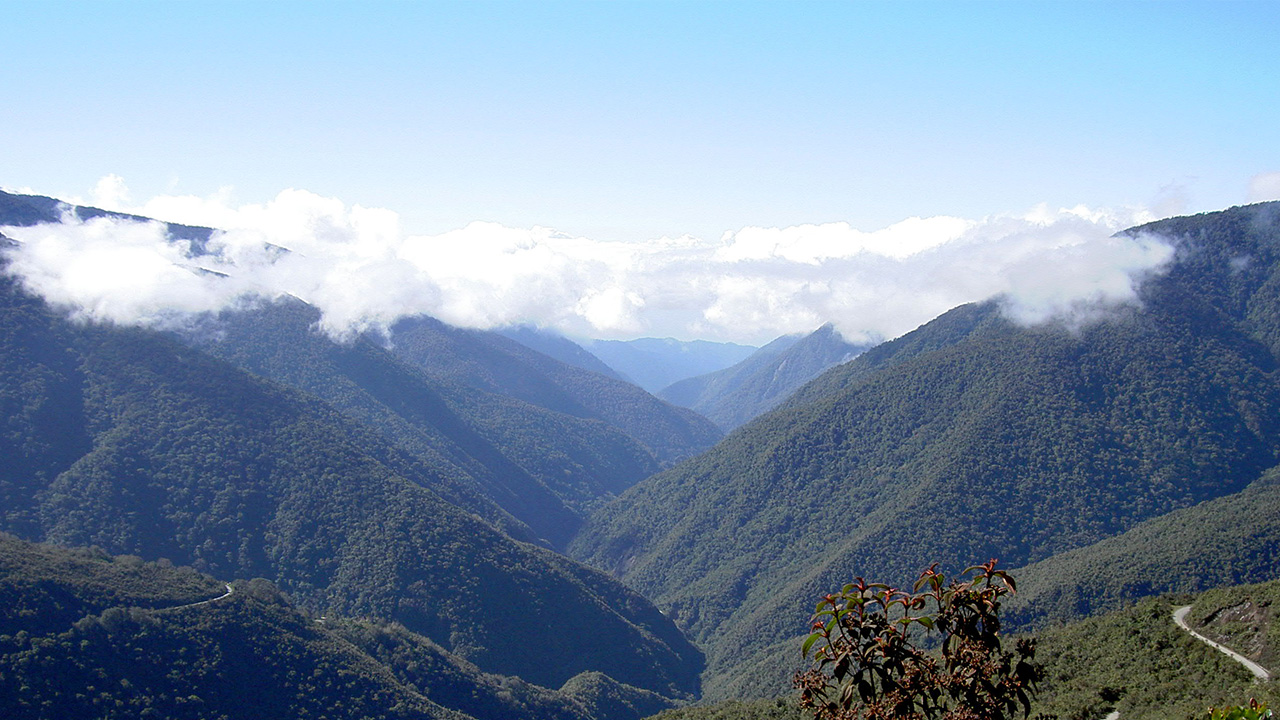[Washington D.C./Leipzig, July 19th 2022] Only about 5% of ecosystems within the Tropical Andes biodiversity hotspot are adequately represented in designated protected areas. Representation may be determined by a series of targets proposed by the Convention on Biological Diversity (CBD), which states at least 30% of land and waters in each country should be conserved. Protecting the full diversity of ecosystems reduces extinction risk for the species those ecosystems support, but very few places on the planet currently meet the CBD target. There is an opportunity to increase representation of ecosystems that meet the CBD target to 31% (39 ecosystem types total) across four Andean countries (Bolivia, Colombia, Ecuador, and Peru) through the additional protection by governments and civil societies of Key Biodiversity Areas (KBAs), places that meet the internationally recognized standard for sites that significantly contribute to the global persistence of biodiversity. This conclusion is shown in a new study led by NatureServe and the German Centre for Integrative Biodiversity Research (iDiv), together with other institutions throughout the U.S., Europe, and South America. The study, now published in the journal Remote Sensing, demonstrates how Essential Biodiversity Variables (EBVs) coupled with KBAs can inform conservation decisions at multiple scales.
To effectively conserve ecosystems, scientists document and monitor their extent (mapped areas where they occur) and conservation status over time. Combining trends in extent with degree of protection helps to accurately assess the effectiveness of conservation actions. This is what an international research team led by NatureServe and iDiv has illustrated for conservation planning in the most biologically diverse area on the planet, the Tropical Andes. Using pre-industrial and recent maps for ecosystems in the Tropical Andes, the team measured long-term ecosystem loss to intensive land uses. They then quantified representation of ecosystem types in the region within current protected areas, and additional representation offered by protecting Key Biodiversity Areas.
Findings revealed only five of 95 ecosystem types within the Tropical Andes hotspot have at least 30% of their area protected – the target for percent of land and waters that all countries should conserve by the year 2030, as advised by the Convention on Biological Diversity. However, the number of ecosystem types adequately protected could increase to 39 when considering ecosystems across Bolivia, Ecuador, Colombia, and Peru if governments and civil society act to protect Key Biodiversity Areas – places that meet the internationally recognized standard for sites that contribute significantly to the global persistence of biodiversity.
The researchers arrived at this conclusion by applying the concept of Essential Biodiversity Variables (EBVs), which assist in measuring different aspects of biodiversity relevant to conservation assessment, planning, and policy. Analyses based on EBVs help to create a baseline for assessing change in terrestrial ecosystems to measure the impact of national policies and gauge progress of commitments toward conservation goals.
“From this study, we can see where some ecosystems have been disproportionately lost to intensive land uses,” said Pat Comer, lead author of the study and Chief Ecologist at NatureServe. “We can also see where some of our investments in land conservation have done well at securing some ecosystems while doing less well with others. By recognizing and conserving the full diversity of ecosystems, we conserve the natural setting for all species to survive and evolve.”

Development of the EBVs involved hundreds of people over many years, including local collaborators from the Tropical Andes, and included many scientists and community members who participated in regional and national workshops in Colombia, Ecuador, Peru, and Bolivia.
"This EBV indicator links conservation goals at the global, national, and local levels. More importantly, the EBV responds directly to the needs expressed by people in these countries,” said Dr. Jose W. Valdez of the German Centre for Integrative Biodiversity Research (iDiv). Dr. Valdez continued, “Using an EBV framework can help bridge the gap between scientists and local communities and be a valuable tool to protect ecosystems and species diversity around the world.”
“While this study focused on the Tropical Andes, the data used to map and analyze ecosystem indicators can inform continental or even global conservation decisions,” emphasized Dr. Sean T. O'Brien, President and CEO of NatureServe. "This study shows that while we have not yet adequately protected all natural ecosystems, we are able to improve the representation of ecosystem diversity if we protect our natural areas.”
Original publication
Comer PJ, Valdez J, Pereira HM, Acosta-Muñoz C, Campos F, Bonet García FJ, Claros X, Castro L, Dallmeier F, Domic Rivadeneira EY, Gill M, Josse C, Lafuente Cartagena I, Langstroth R, Larrea-Alcázar D, Masur A, Morejon Jaramillo G, Navarro L, Novoa S, Prieto-Albuja F, Rey Ortíz G, Teran MF, Zambrana-Torrelio C, Fernandez M. Conserving Ecosystem Diversity in the Tropical Andes. Remote Sensing. 2022; 14(12):2847. https://doi.org/10.3390/rs14122847
Contact
Samantha Belilty, Communications Director
NatureServe
Phone: 703-908-1871
Email: sam@natureserve.org
Urs Moesenfechtel, Science Communication Officer
German Centre for Integrative Biodiversity Research (iDiv)
Phone: +49 341 9733106
Email: urs.moesenfechtel@idiv.de
About NatureServe
For nearly 50 years, NatureServe has been the authoritative source for biodiversity data throughout North America. To protect threatened biodiversity, NatureServe works with federal agencies and over 60 state or provincial organizations and 1,000+ conservation scientists in the U.S. and Canada to collect, analyze, and deliver standardized biodiversity information, providing comprehensive spatial data to meet both regulatory and conservation needs. NatureServe and its network partners develop and manage data for over 100,000 species and ecosystems, answering fundamental questions about what exists, where it is found, and how it is doing. Visit www.natureserve.org to learn more.
About German Centre for Integrative Biodiversity Research
iDiv is a German Research Foundation (DFG) research centre with more than 400 employees and members based primarily in Halle, Jena and Leipzig. Here, researchers from more than 35 nations establish the scientific basis for the sustainable management of our planet’s biodiversity. The mission of iDiv is two-fold: to provide a scientific basis for the sustainable use of our planet’s biodiversity, and to develop new projects in the field of Integrative Biodiversity Research. Visit https://www.idiv.de/en/index.html to learn more.